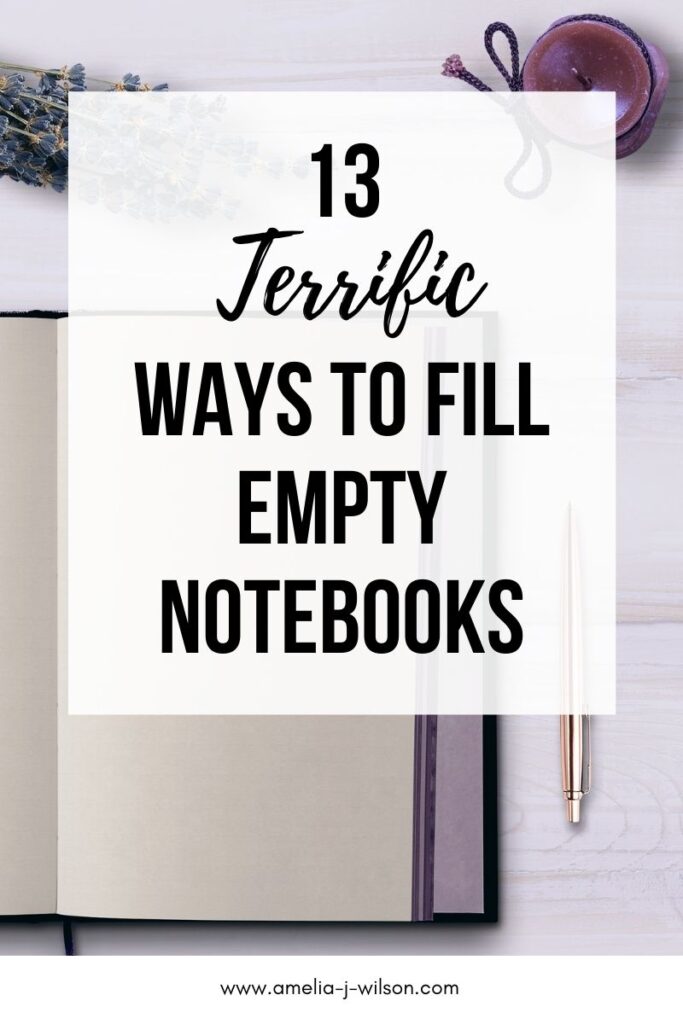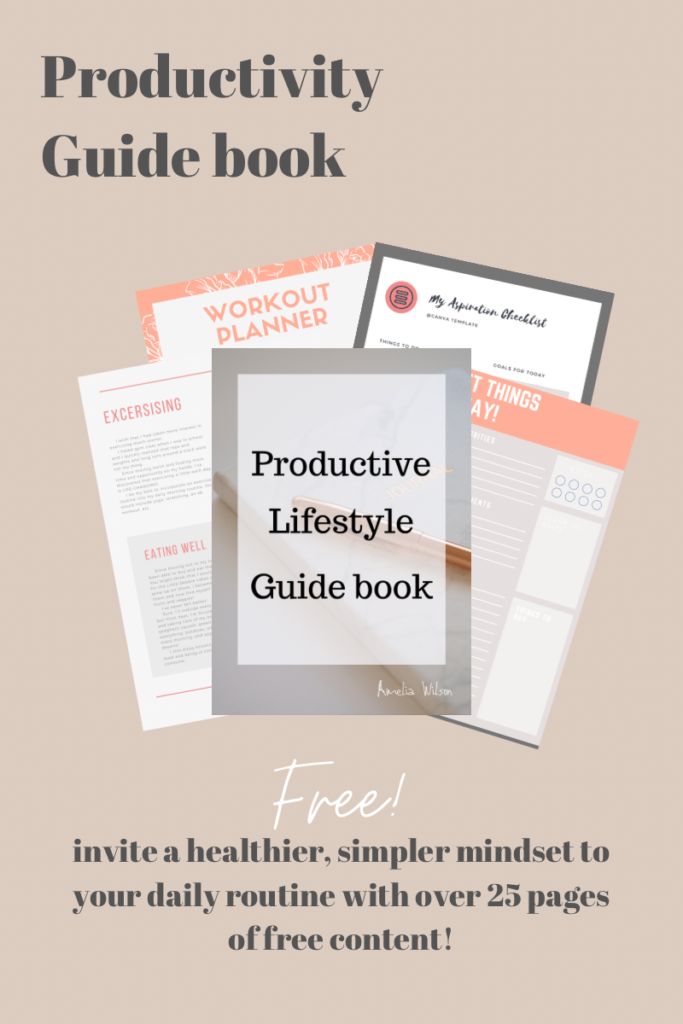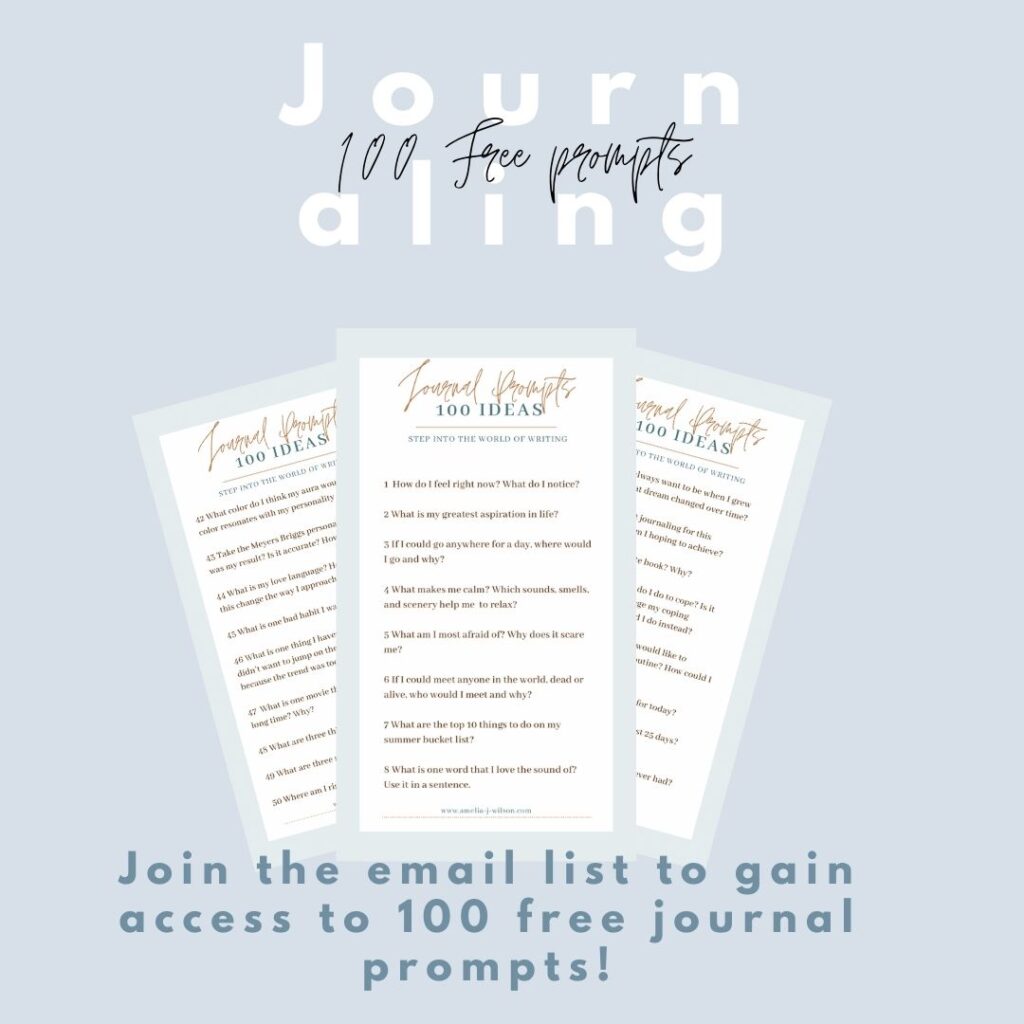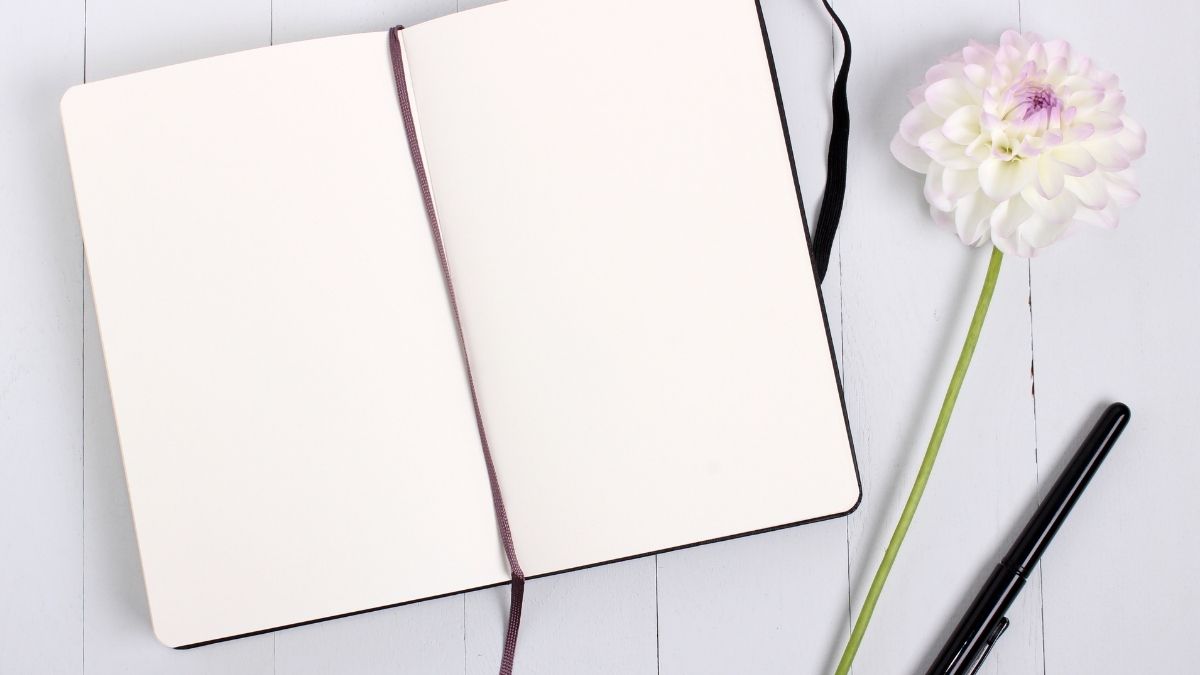Journaling has been a staple of my morning and evening routine as of late, and I’ve found myself sifting through piles of pages and old notebooks to find a good use for them. While it can be hard to find a journal that suits all of your needs, I have been grateful for how compatible I am with my own journal.
Unfortunately, there are several notebooks and journals lying around that I don’t use or have neglected because I found my perfect journal months ago!
Today, I want to offer a solution for any writers, artists, or even the average joe to fill up unused notebooks. There is no sense in letting them collect dust or hit the bin.
Disclaimer: All of the views and opinions in this post are solely my own and are not sponsored. This post may include affiliate links, meaning I earn a commission through links at no cost to you.

Here are my top solutions for what to do with unused notebooks
Below are thirteen ideas on how to fill up your notebooks!
1. Free Journaling
Free journaling is one of the main solutions I repeatedly offer when it comes to journaling. If you’ve seen any of my YouTube videos, you know that free journaling (as in a stream of conscious journaling) is one of the best ways to utilize your journal.
Writing down your goals, aspirations, affirmations, and motivations alongside your thoughts and feelings allows you to recognize patterns within your daily life.
In my blog post on mental health journaling, I included a segment on CBT or cognitive behavioral therapy. Through writing, you can identify triggers, distortions, and negative thought patterns. Moreover, free journaling allows you the opportunity to get a grasp of your subconscious thoughts. It enables you to recognize your thought patterns and discover your deepest desires,
If you have a notebook lying around that meets all of your writing needs and criteria, I highly recommend picking it up and making it your personal journal where you can express yourself in any way you want.
2. Bullet journal
While bullet journals are often reserved for journals with blank pages or dotted grids, there’s no reason an ordinary journal lying around your house can’t be used!
During my time in college, I was broke. I had no money to spend on a nice bullet journal, but I really wanted to get into bullet journaling. I had been watching amandarachlee on YouTube and wanted to recreate some of her gorgeous spreads. Thankfully, I had several notebooks lying around. So, I picked one up and made a cute bullet journal spread.
If you have a journal that you don’t know what to use for, try bullet journaling. It’s an artistic way to implement productivity and creativity within your daily routine. While I am personally not that great of an artist, I love making simple and small doodles in my journal to add a greater appeal. I’ve also found that using a bullet journal as a planner or agenda is more functional for me than using a store-bought version.
3. Brainstorming/outlining
For the half-filled or really bizarre notebooks laying around your house, try using them as a brain dump or brainstorming utility.
I have a white journal that is half lined and half blank on every page. It’s certainly awkward to use as a journaling journal, but it might be one of my most used journals in my collection. I use the journal as a place for brain dumps.
Ideas, outlines for stories/videos/blog posts, planning, aspirations, etc., are scattered throughout this journal. I’ve found that making lists and dumping out all of my creative ideas into this notebook has provided me with two benefits:
- The brain dump notebook keeps all of my ideas and thoughts in one place, making it easy to sift between my brainstorming projects and thoughts. All of my plans and ideas are in one place, so it’s easy to navigate.
- The brain dump is beyond helpful for sorting through and documenting my ideas. Had I not written down some of my creative thoughts, I would forget them and never carry them through to their full potential.
Therefore, I highly recommend that if you have a spare notebook lying around, you use it as a method for collecting all of your creative ideas.
4. Stories
As a writer, I find that having a journal dedicated to my stories is beyond beneficial.
And whether you’re a writer or not, a story journal is super fun to have. Humans are natural storytellers. Many of our religions, legends, and folklore come from oral tellings that we created or shared with one another. Even if you don’t consider yourself an avid storyteller, writing down simple story ideas, scenes, and dialogues can help you grow as a writer and a person.
Keeping a story notebook will allow you to document your creative ideas and may illuminate parts of who you are. After all, daydreams and fantasies are a tell for how a person thinks, acts, and feels in daily life.
Try keeping a story notebook to document your genius ideas or use it as a creative outlet. It doesn’t have to be perfect or see the light of day. It’s simply a method of self-expression that allows you to have fun and let loose.
5. Gratitude + affirmations
Every morning I write down my affirmations/motivations, and every evening, I write down three things I was grateful for that day. This has completely transformed my mood, allowing me to be a more positive person.
While I use my free journal notebook for this, you could use an entirely different notebook if you have one that needs filling.
Write down your aspirations like:
- I want to graduate from college with a degree in medical science.
- I want to travel to Italy and see the colosseum.
- One day I want to have a big backyard with three dogs.
Write down your affirmations:
- I am a product of the stars and therefore am worthy.
- I have the ability to choose my own path in life.
- Creativity and self-love flow easily to me.
Write down what you’re grateful for:
- I am grateful for the time spent with friends and family.
- I am grateful for all of my plants that adorn my home.
- I am grateful for the walk in the park I took today.
These are merely examples to help you gain an idea of what you could include in your own journal. I highly recommend doing morning affirmations and evening gratitude, as it dramatically lifts your mood. And, as silly as it sounds, there is some secret magic to it—that when you write down your desires and give yourself up wholeheartedly to them, they inevitably come true one way or another.
6. Notes from learning
Learning is one of those things that you should never stop doing. One of the most effective habits of successful people is the continuation of education. You don’t need to go back to school or pick up a history book (unless you want to, of course!). In fact, you can learn for free from so many different sources!
How to learn for free:
- Use the Internet (forget what they told you in school, Wikipedia is a fantastic resource).
- Visit the library/get a library card.
- Find informational videos on YouTube (I will always love crash course)
- Look for blogs like this one and sign up for newsletters that offer informational freebies!

There are plenty of ways to learn for free. Once you know what you want to learn, take notes in a notebook or journal.
No matter your learning style, taking notes by hand is one of the best ways to retain information. The reason for this is that you have to slow down and jot down the information after you’ve read/heard it. This means it passes you twice and makes you more likely to recall the information later.
Note-taking can be annoying and tedious (I blame the school system for this), but you may find it to be more enticing when you begin to learn on your own.
First, you get to decide what you learn so you can choose topics that interest you. And second, you can take notes however you want. You have unlimited freedom with your note-taking so you can make the notebook work for you!
7. Tarot, astrology, or spiritual journal
About a year ago, I dove into spiritual and religious topics and followed up these endeavors with a spiritual journal.
In my journal, I jot down:
- Tarot readings
- Astrological events
- Dreams and symbolism
- Stream of conscious thoughts
- Facts about religious beliefs
No matter your religion of practice, spiritual journals can be life-changing. Where I live, Christianity is a prominent religion, and I’ve had the opportunity to discuss religious practices with close friends. Many of them have found profound benefits from practicing morning devotions through reading scripture and journaling about it.
I think that having a spiritual or religious journal brings you closer to your beliefs and provides clarity and peace of mind to your physical self.
If you have a spare notebook, try practicing religious or spiritual journaling in the mornings to get closer to your god/gods. And even if you aren’t religious, it can be fun to journal through your spiritual experiences. Like I said before, I adore tarot and often jot down my readings and the meanings behind my readings in my journal.
8. Art
Art journals are another idea for people with spare journals lying about. While I don’t consider myself a strong or active artist, I can recognize the benefits of having an art journal and have chosen to include this on my list!
Art journals allow you to practice honing your skill. You can jot down sketches, brain dumps, line practices, and doodles. Really, the opportunities are endless.
I think a separate art journal is beneficial for people getting into bullet journaling. Since bullet journaling tends to be heavily art-centered, I see an appeal for having a sketchbook nearby to practice designs and drawings before implementing them into your bullet journal.
9. Travel journals
If you haven’t made a travel journal before, you’re missing out! I made a travel journal back in 2017 when I took my trip to Costa Rica (you can view the flip through here), and it was the best thing I ever chose to do both artistically and creatively regarding journaling.
Travel journaling is a lot like scrapbooking. You take pieces of paper, colored tape, photos, clips, and stickers to create a stunning piece of art that acts as a memento of your trip.
As I write this post, I have just finished my trip to the Grand Canyon via Route 66. I’ll be making another travel journal very soon, and I’m beyond excited to do so!
10. Guided journal prompts
One of my favorite methods of journaling is using guided prompts. They’re super beginner-friendly and, honestly, terrific for anyone at any stage in their journaling journey!
As a creative writer, I really love this 642 journal prompts book that a friend gifted me a few years back. The prompts are silly and fun, which makes for amazing inspiration and room for creativity.
If you are interested in journal prompts that you can use in your own notebook, I recommend checking out my post on 5-minute journals.
Additionally, if you sign up for my newsletter, you can gain 100 journal prompts for free! So, if you have an extra notebook and want to fill it with prompts, definitely snag my 100 journal prompts file.

11. Dream diaries
Dream diaries are beyond entertaining to keep. Not only that but having a dream diary also illuminates subconscious thoughts and desires.
When keeping a dream diary, try to jot down as many details of your dream as possible. Go back and highly keywords like nouns, symbols, or descriptions. Then, look them up in a dream dictionary to see what they mean. Write down any revealing imagery and meanings beneath the dream description to keep for later.
The more you track the dreams, the easier it becomes to remember new ones in the morning. And again, it allows you to understand the symbolic and hidden meanings behind what your subconscious procures at night.
12. Bucket lists
Another great idea for a blank journal is to create bucket lists! This is a fantastic way to jot down ideas and aspirations with unique categories and setup.
If you need some bucket list ideas, try some of the following:
- Travel
- Categorized travel (country, state, local, etc.)
- Career
- Date ideas
- Books
- Food
- Drinks (wineries, bars, etc.)
- Bookstores
- Movies
- Retail stores
- Local shops
- Household decor
- Garden
- Hobbies
- Crafts
- Diy projects
- Art
- Music
- Concerts
- Wedding goals
13. Trackers (habits, moods, food, exercise)
Lastly, trackers are another excellent method for filling up old and empty journals and notebooks. I have a video on how to make a simple habit tracker and a video on different habit tracker spreads.
Trackers are great for comparing your personal journey and highlighting your successes and failures. You can use them as a tool to gauge your abilities and progress, as well as a way to reflect on how far you’ve come in any situation. I love making habit tracks for exercise and journaling, but you can make any kind that works best for you!

If you like this post, check out some similar posts of mine below!
Feel free to leave a comment below and let me know how you fill your notebooks!
You can also email me with questions or concerns you may have at info.amelia.wilson@gmail.com
My new book, Witch in the Water, is available on Amazon!
Also, check out my poetry book, The Lights are on but Nobody’s Home, available now on amazon for $6.99 in paperback form!
Disclaimer: All of the views and opinions in this post are solely my own and are not sponsored. This post includes affiliate links, meaning I earn a commission through links at no cost to you.
Thanks again

